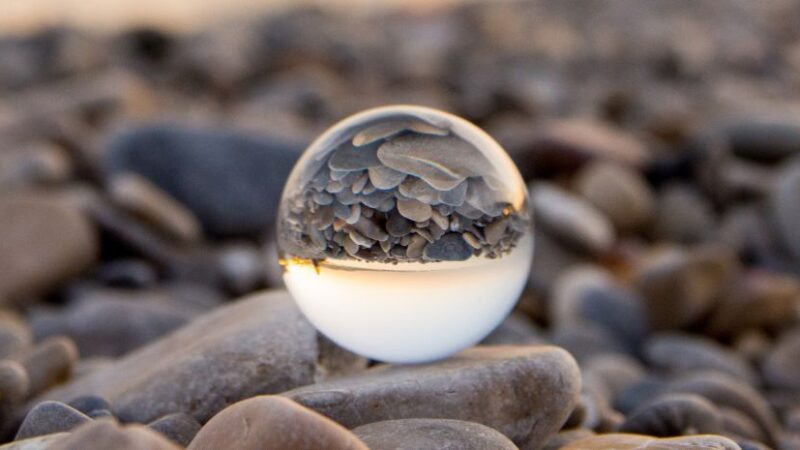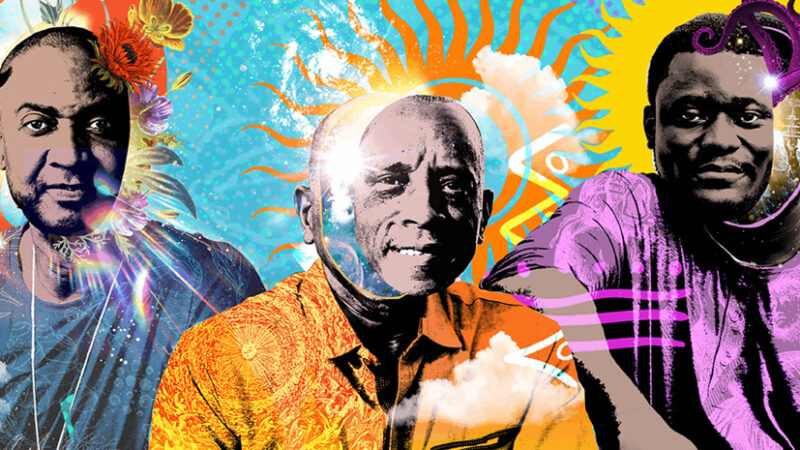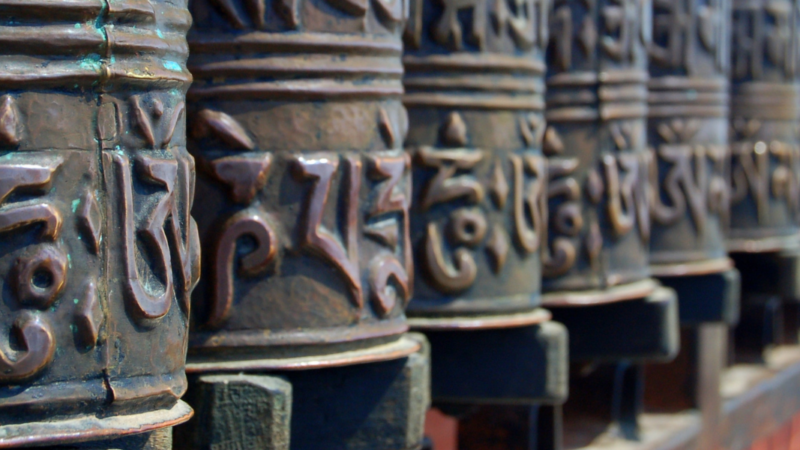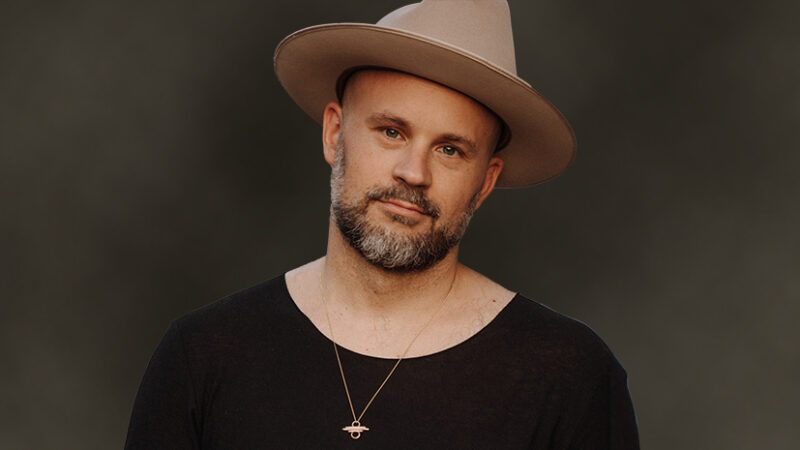-
E91: Allowing Life to Remove Your Blockages
Michael Singer — July 2, 2025
The foundational flaw in human behavior is the belief that "I'm not okay." What follows is the...
-
Cyndi Dale: Becoming Your Own Best Ancestor
Cyndi Dale — July 1, 2025
On the surface, it appears as though the lives we live proceed forward moment by moment in a...
-
Honey Tasting Meditation: Build Your Relationship with Sweetness
There is a saying that goes “hurt people hurt people.” I believe this to be true. We have been...
Written by:
Amy Burtaine, Michelle Cassandra Johnson
-
Many Voices, One Journey
The Sounds True Blog
Insights, reflections, and practices from Sounds True teachers, authors, staff, and more. Have a look—to find some inspiration and wisdom for uplifting your day.
Standing Together, and Stepping Up
Written By:
Tami Simon -
The Michael Singer Podcast
Your Highest Intention: Self-Realization
Michael Singer discusses intention—"perhaps the deepest thing we can talk about"—and the path to self-realization.
This Week:
Cyndi Dale: Becoming Your Own Best Ancestor -
Many Voices, One Journey
The Sounds True Blog
Insights, reflections, and practices from Sounds True teachers, authors, staff, and more. Have a look—to find some inspiration and wisdom for uplifting your day.
Take Your Inner Child on Playdates
Written By:
Megan Sherer
600 Podcasts and Counting...
Subscribe to Insights at the Edge to hear all of Tami's interviews (transcripts available, too!), featuring Eckhart Tolle, Caroline Myss, Tara Brach, Jack Kornfield, Adyashanti, and many more.
Most Recent
Turn your understanding of meditation inside out and u...
Meditation has found a home in the West. Countless scientific studies tout its benefits, and a multitude of students proclaim its life-changing value. I am one of those students. For over forty-five years I have practiced this ancient art, and I continue to reap its remarkable rewards. While I remain a follower of many wisdom traditions, and believe that no one has a patent on truth, thirty years ago I took refuge in Buddhism. The adage “Chase two rabbits; catch none” points out the necessity of commitment, and the dangers of spreading yourself too thin.
My passion for meditation led me into the traditional Tibetan three-year retreat, where I became a monk with robes and a shaved head, meditating fourteen hours a day in a remote monastery. I even slept sitting up in meditation posture, practicing the nocturnal meditations of dream and sleep yoga. Three-year retreat is like a meditation university, providing the opportunity to practice dozens of meditations in the most nurturing environment. It remains the most transformative experience of my life.
Of the many practices I was introduced to in retreat, one meditation stands out: the quirky, intense, multifaceted, and revolutionary practice of reverse meditation. I learned these practices within the context of Mahāmudrā (Sanskrit for “great seal”), a lofty tradition in Tibetan Buddhism that explores the nature of the mind. This was over twenty years ago, and since then these radical meditations have become a cornerstone of my spiritual path.
They’re called “reverse” meditation for a number of reasons. First, these practices are the opposite, or reverse, of what many of us associate with meditation. Most people think that meditation is about feeling good, getting “Zen,” or otherwise chilling out. But this is just one small aspect of meditation. Complete meditation is not about feeling good—it’s about getting real. And getting real requires dealing with the reality of difficult situations.
Second, these unique meditations are designed to reverse our relationship to unwanted experiences, which means going directly into them instead of avoiding them. In so doing we can discover the basic goodness of whatever arises, which is deeper than interpretative goodness. Basic goodness refers to the ineffable “suchness, isness, thatness” of whatever occurs—good or bad.
If we capitulate to our usual avoidance strategies, we push the acute, conscious psychological discomfort of avoidance into becoming a chronic, unconscious mental cramp. The discomfort is still there, but now it’s buried deep in our body-mind matrix, where it works backstage to dictate much of our onstage life. The rejected experience then manifests symptomatically—it becomes an undiagnosed reflection of an underlying discord that expresses itself in virtually everything we do. Our actions then become evasion tactics—reactivity, psychological duress, physical illness, and all manner of unskillful responses to the challenges of life—as we try to skirt these buried, uncomfortable feelings.
The reverse meditations give us the opportunity to relate to our mind instead of from it—and also to establish a relationship to our evasion tactics, which otherwise become obstacles that act like scar tissue to sequester the unwanted experience from consciousness. Relating from our mind, from our reactivity, is no relationship at all. In place of conscious relationship, we respond with knee-jerk reflexes to difficult experience, a reactivity that kicks us out of our feeling body and into our thinking head, and into unnecessary suffering. Instead of dealing authentically with the challenging somatic sensation, we leap into inauthentic conceptual proliferation (confabulating and catastrophizing) to buffer ourselves from the discomfort of our feelings. We run from the honest pain and real news that come with being human, and into dishonest commentary and fake news. The truth is that many of the worst things in our life are things that never really “happened”!
Third, the reverse meditations upend our sense of meditation altogether. They represent a revolution in spiritual practice that turns our understanding of meditation inside out and upside down, and therefore radically expand our practice. Situations that were once antithetical to meditation now become our meditation. Obstacles that previously obstructed our spiritual path now become our path. This means that everything becomes our meditation. Nothing is forbidden. We can enter lifetime retreat in the midst of ordinary life.
Excerpted from Reverse Meditation: How to Use Your Pain and Most Difficult Emotions as the Doorway to Inner Freedom by Andrew Holecek.

Andrew Holecek is an author, speaker, and humanitarian who offers seminars internationally on meditation, lucid dreaming, and the art of dying. His work has appeared in Psychology Today, Parabola, Lion’s Roar, Tricycle, Utne Reader, Buddhadharma, Light of Consciousness, and many other periodicals. Learn more at andrewholecek.com.
Three Black Men
We know that we’re living in a critical time in human history. We know that we can no longer say, “It’s not my responsibility.” What is it that this time begs us to see? In this podcast, Tami Simon joins visionary leaders Bayo Akomolafe, Orland Bishop, and Resmaa Menakem for a compelling conversation about the intersection of past, present, and future and the creation of new rituals and pathways for healing, equity, and belonging for all people.
Tune in as Bayo, Orland, and Resmaa discuss with Tami: “facing the monstrous” and reconciling that which we’ve chosen to avoid; how transformation is inevitably disabling; stopping the propagation of violence and fear in the human psyche; the metaphor of the fissure in the road; the power of ritual to foster inclusion and “metabolize” trauma; initiating the shift from the profane to the sacred; tapping the generative energies awaiting expression; imaginal cells and the analogy of the caterpillar and the butterfly; the evolution of music and trusting the maturation of creative acts; the Trickster archetype, and how oppression is never complete; getting out of the habit of predicting what comes next; and more.
Note: This episode originally aired on Sounds True One, where these special episodes of Insights at the Edge are available to watch live on video and with exclusive access to Q&As with our guests. Learn more at join.soundstrue.com.
Tibetan Buddhist Practice for Developing Compassion
Realizing Emptiness and Connection
Take a few minutes to sit peacefully with your eyes closed or looking down. Observe your breath as you breathe in and out.
-
- Allow yourself to breathe naturally, without any modification of the breath.
-
- For a few minutes, simply observe your breath in its most natural state, as it passes through your nostrils.
-
- If you find that you are distracted by your thoughts or sounds, no problem; just go back to observing your breath.
In your mind, see a table.
In English, it is described by the word “table.”
This table is made up of many pieces: a top, legs, glue, nails, and varnish.
The legs and top are made up of wood from a tree. Before the tree was cut down it grew as a result of many variables—sunlight, seeds, rain, earth, and wind, to name just a few.
And before it was a tree, it was a seed from another tree, and another tree before that.
What about the nails or the varnish? Those items can also be traced backward to the people, companies, and components that went into their production.
And the people who created the components also came into being from their parents, and their parents before them.
We now see that everything around us—all phenomena—were caused by something that preceded it and can be traced back to a beginningless time.
Next time, pick another thing, place, or person and go through the same logic. As you go about your day, notice everything around you and apply the same logic.
When you walk around your work or home environment, notice that everything is empty of inherent existence. Everything has a name that refers to a thing that comes together for a time.
Zen teacher Norman Fischer said:
- In the end everything is just designation: things have a kind of reality in their being named and conceptualized, but otherwise they actually aren’t there in the way we think they are. That is, connection is all you find, with no things that are connected.[. . .] It’s the very thoroughness of the connection—without gaps or lumps in it—only the constant nexus wherever you turn—that renders everything void. So everything is empty and connected or empty because connected. Emptiness is connection.
This is an excerpt from The Tibetan Book of the Dead for Beginners: A Guide to Living and Dying by Lama Lhanang Rinpoche and Mordy Levine.
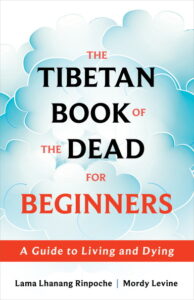
Customer Favorites
Tara Brach: True Refuge
Tara Brach is an author, clinical psychologist, and the founder and senior teacher of the Insight Meditation Community of Washington. A longtime Sounds True collaborator, Tara is one of the creators and main teachers for the in-depth Mindfulness Meditation Teacher Certification Program. In this episode of Insights at the Edge, Tami Simon speaks with Tara about “the Trance of Unworthiness”—a state in which we believe that we are too inadequate, incomplete, and broken to love ourselves. Tara explains why we are so tough on ourselves and the steps needed to cultivate self-compassion. Tami and Tara also discuss how we can find refuges within no matter our current difficulties. Finally, they talk about the need for mental health professionals to understand contemplative practices such as mindfulness. (56 minutes)
Why the Summer is Surprisingly Busy—And What To Do A...

Many people find themselves surprisingly busier in the summer than they expect to be. The chief reason we’re surprised is that the summer brings new projects that we often don’t count as projects and we have to weave those projects in with the projects we set in motion in the spring.
Why don’t we count the new projects that summer brings? Simple—many of us don’t count “life” activities as projects or prioritize “life” activities in the same way we do “work” projects. There’s an artificial divide between the work we do and the “life stuff” we do.
But here’s the thing: regardless of whether something falls into the “work” or “life” bucket, it’s going to take time, energy, and attention to get done. My definition of project in Start Finishing is anything that requires time, energy, and attention to complete. The upshot of looking at things this way is that it helps us see more clearly all the stuff we’re carrying and trying to do.
So, what are some “life” projects?
Summer trips are projects.
Transitioning kids from being at school all day to being at home all day for the summer is a project. (As is transitioning them back into school.)
Figuring out how to keep said kids fed every day is a project (that then turns into a new daily routine).
Maintaining yard care equipment is a project (that then turns into a new weekly routine of taking care of the lawn.)
Cleaning out the garage is a project.
Getting the motorcycle and/or bike ready for the season is a project.
I could go on, but you get the point. All of those are summer-specific projects that fall in our laps after the spring. But when we’re setting plans in spring, we’re often not thinking about them because they’re not in our face in the same way as a kid asking where the milk is (where it always is!) or the weeds that are peeking over the window to the backyard.
If it were just that new projects blossom in the summer, it would be one thing. But conjoined with new projects blossoming is that many of us often want to work less in the summer—and, for some of us, the desire to slow down isn’t just emotional, but something primal or spiritual. The long, hot days of summer changes some of us from hard-driving, high-energy, can-do folk into a walking Jimmy Buffet song.
Though we find ourselves in this position every year, it can be hard to see the pattern. Part of it is just the pace of life, but the other part is that we too often think of ourselves as invariant robots rather than the animals we are. Every other animal adapts to the changing world around it—artificial lights and air conditioning may allow us to alter the environment, but the changes still affect us more than we like to let on.
If you’re finding your summer busier and more compressed than you’d like it to be, here are three questions that will help you sink into the season:
- What new or recurring seasonal projects emerged that you hadn’t planned for or didn’t fully acknowledge as a project?
- Which of the projects you planned in the spring can be put on hold or dropped to make space for this summer’s projects?
- Are there any shifts to project timelines or your daily work schedule that would help you keep momentum on your projects while sinking into feeling of summer?
You might also check out Samantha Brody’s Overcoming Overwhelm—it’s a fantastic book that explains how overwhelm shows up in our bodies, hearts, and heads and what to do about it.
Better to adjust now than spend the summer feeling like you’re behind and unable to enjoy the people, nature, and energy of the season.

Charlie Gilkey is the founder of Productive Flourishing, a company that helps professional creatives, leaders, and changemakers take meaningful action on work that matters. He is the author of The Small Business Life Cycle, and is widely cited in outlets such as Inc., Time, Forbes, the Guardian, Lifehacker,and more. He’s also an Army veteran and near-PhD in philosophy. He lives in Portland, Oregon. For more, visit productiveflourishing.com .

Pre-order your copy of Charlie’s forthcoming book,
Start Finishing: How to Go from Idea to Done from your favorite retailer below!
Sounds True | Amazon | Barnes and Noble | IndieBound

Pin It!
James McCrae: Why We Need the Art of YOU
Where does creativity come from? How do we uncover our authenticity and deepest expression in a society that would have us cover it up to fit in? What is the connection between creativity and healing? Join Tami Simon in conversation with poet, artist, and author James McCrae as they discuss these questions, the role of the artist today, and his new book, The Art of You: The Essential Guidebook for Reclaiming Your Creativity.
A wonderful listen for creatives of every type and anyone who’s ever had the thought, “I’m not creative,” Tami and James talk about the courage to choose authenticity; the magnetic nature of vulnerability; creativity as a spiritual path; intuition as a portal to the invisible dimensions; emotion: the energy that fuels creativity; shadow work and the “creative purge”; the yin and yang of creativity; cultivating the soil; giving your ego the appropriate job; the metaphor of the sunflower; listening: the first stage of creativity; social media, art, and technology; viral ideas and the origination of the term meme; curiosity and the spirit of exploration; and more.
Note: This episode originally aired on Sounds True One, where these special episodes of Insights at the Edge are available to watch live on video and with exclusive access to Q&As with our guests. Learn more at join.soundstrue.com.
